Questions and Answers September 2014
This is one of the most popular sections of e-gardens each issue. It’s where Neil helps by answering your questions. He chooses six to eight questions that he feels will impact the most readers. Since plant IDs usually are of interest only to the sender, they rarely make the cut. To fit into the template for this section, each question must have a photograph attached to it. Click to send Neil your photo and question. Please tell him where you garden, so he can give you the most accurate reply.
Question: Gnat-like insects are sucking the life out of my redbud trees’ leaves. Some of the leaves turn completely yellow and drop off early. They’ve done this before. What can I do to prevent it next year? A.M., Hico.
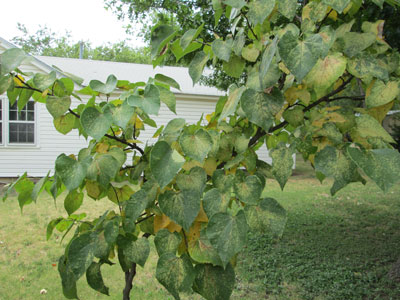
Answer: Your tree has been hit (again) by lace bugs. They suck the color right out of its leaves, and when the damage becomes serious enough, the leaves just go ahead and fall. You’ll also see lace bug damage on bur oaks, chinquapin oaks, boxwood, azaleas, loropetalums, Boston ivy, sycamore, pyracanthas and a host of other plants. You can spray for these pests as you first see the tiny mottling appearing, or you can apply a systemic insecticide to the ground beneath the plants about a month prior to when the damage normally shows up.
Question: We have noticed this fungus growing on our oak tree. The leaves are falling, and the white fungus is falling off into the yard. Are we going to lose our tree? Is there anything we can apply? D. and M. D., no city given.
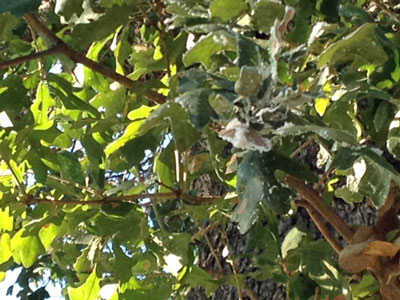
Answer: This is a minor problem. It looks like the camouflage mechanism of a leafroller insect. I see them on my shrubs and trees from time to time. I pay them no attention. I’ve never seen any evidence of damage on my own plants. Odds are that other years you won’t have nearly this much.
Question: I have a bur oak tree that is developing these spots on its leaves. What do I need to do to stop it? D.R., no city given.
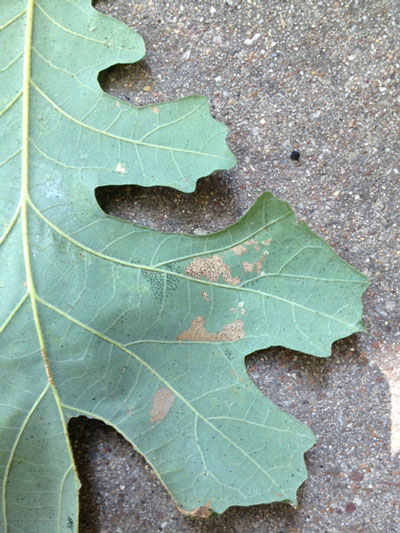
Answer: This is the work of a leaf skeletonizer. In the whole scheme of life, it’s a very tiny issue that does not justify any treatment this late in the season. No cause for alarm.
Question: I planted a vitex last September, also a Chinese pistachio. Both leafed out this spring, but each seems to be in a steady decline at this point. Is either being bothered by disease? I see some reference to unusual diseases for them. Are they having trouble acclimating to the West Texas climate? I don’t want to lose them. T.K., Odessa.
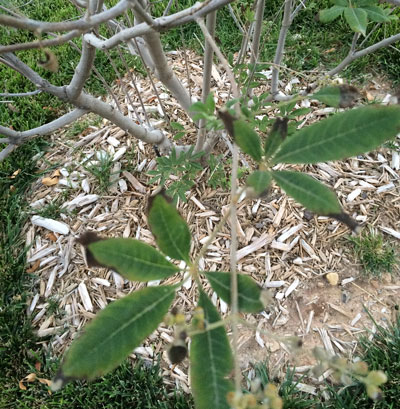

Answer: These do not look like insect or disease problems in either case. The vitex leaves have suffered moisture stress. That doesn’t necessarily mean that your tree got too dry, although that’s certainly a possibility. That type of tip and edge burning of leaves can also be due to hot, drying winds (like you have in Ector County), excessive sodium or other mineral salts in the soil and irrigation water, and other assorted factors. Keep it watered well the balance of this growing season. Vitex is perfectly suited to arid conditions, so it should be fine next time around. As for the pistachio, hopefully you have wrapped its trunk with paper tree wrap from the nursery or hardware store to protect against sunscald and subsequent invasion by borers. If not, do so now. As with the vitex, keep it moist the balance of this growing season. Disease issues with both plants are highly uncommon. I would remain optimistic for both plants’ survival.
Question: We have three bald cypress trees. One is affected worse than the others. Its leaves are turning brown. We keep them watered properly, and the soil pH seems appropriate. They are 5 years old, planted from 30-gallon pots. What might be wrong? S.O., Alvarado.
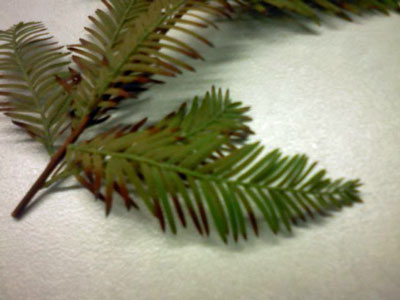
Answer: My answer here is going to be almost identical to that for the question from Odessa, just above. This is moisture stress, and its possible causes would be dry soils (even for a few days), excessive mineral salts and hot, drying winds, among other things. For what it’s worth, bald cypress trees do this very commonly from I-35 westward in Texas. Low humidity adds to their challenges.
Question: Our street was recently revitalized, and the city tried to save as many of the trees as possible. This crape myrtle was relocated to this spot two months ago, but I’m concerned that the most beautiful part of the plant was put near another tree. What would you do if it were yours? C.M., Waxahachie.
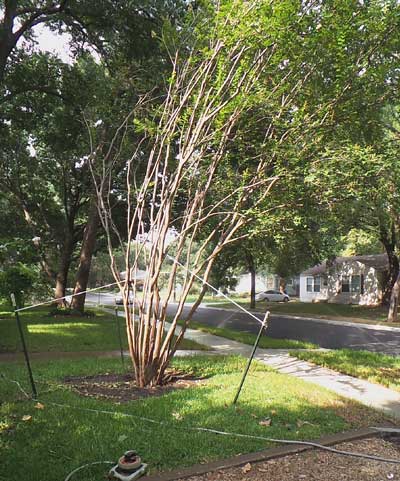
Answer: I’m concerned about this plant because of its large size, the time of the transplanting (winter is ideal), and the fact that it seems to be surrounded by large trees. If it seems to be declining, you may need to remove any bare stems that have become brittle. The plant seems to be leaning. You may end up having to have it dug and reset. You actually ought to consider moving to a full-sun location. This looks too shady. Either way, you might want to cut the lanky tops to the ground so that new shoots can begin to grow and develop. Good luck with it! As a fellow crape myrtle lover, I really hope it does well for you.
Question: We have seen this fungus on our oak tree on several occasions. We keep knocking it off, but it comes back. The tree looks healthy otherwise. Is there anything else we should be doing? M.C., Arlington.
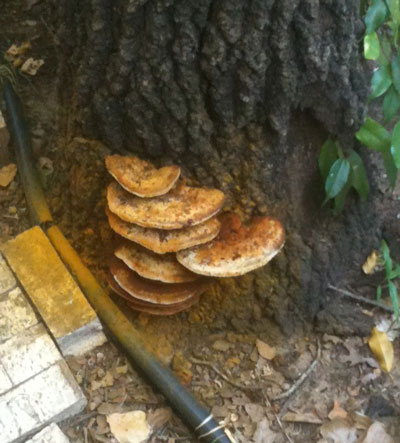
Answer: This is a bracket fungus. It’s a saprophyte, meaning that it lives off decaying organic matter. It is not parasitic to live tissues. However, the fungus may indicate that there is some type of decay or dieback in that part of the tree’s trunk. It would certainly merit hiring a certified arborist to take a look at it on-site.
Question: I keep having stinging nettle come up in my yard. Could it be spread by a lawn service company that goes from lawn to lawn? C.C., no city given.
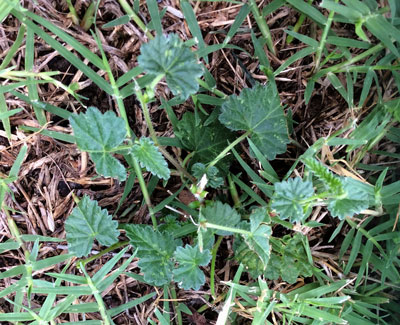
Answer: I guess that would be possible, but your bermuda looks a bit thin. It’s more likely that the nettle is coming into the sparse grass from elsewhere nearby. I would suggest application of a broadleafed weedkiller spray (containing 2,4-D) to kill the existing plants. Apply nitrogen to get more vigorous growth from the grass, and mow it low (1-1/4 to 1-1/2 inches) to keep the turf low and dense.

